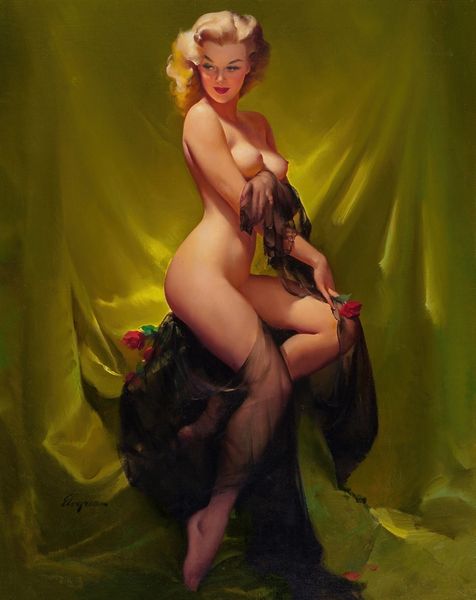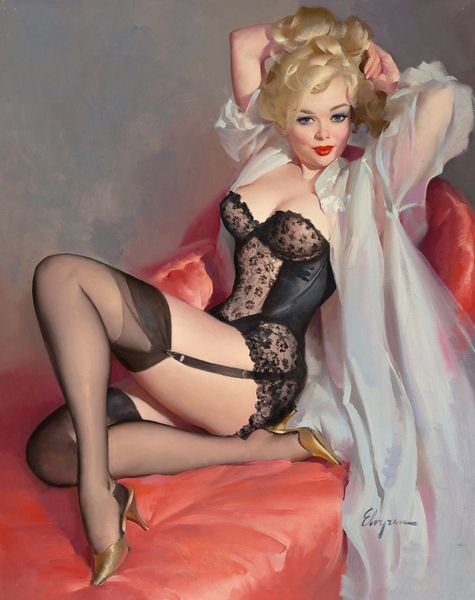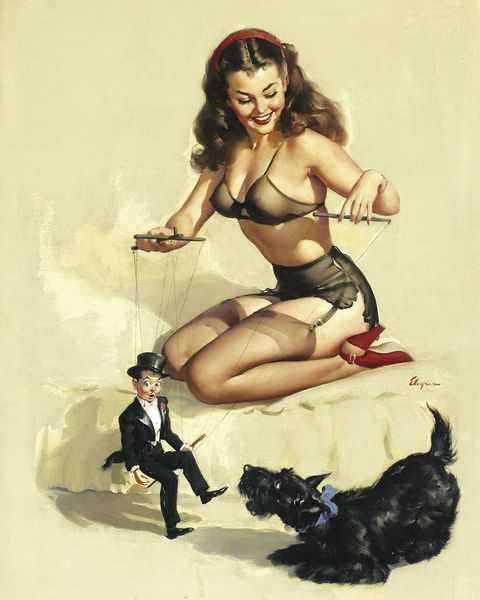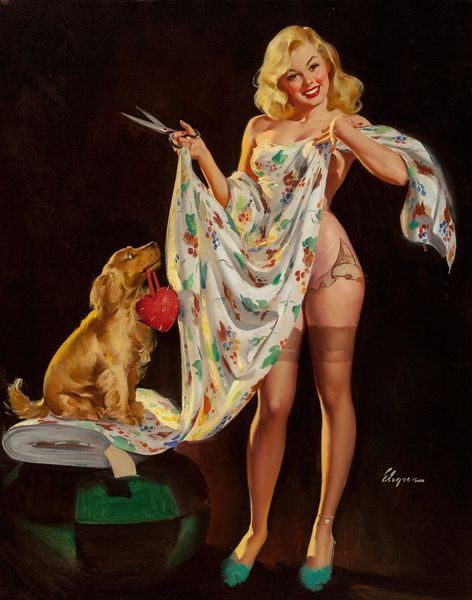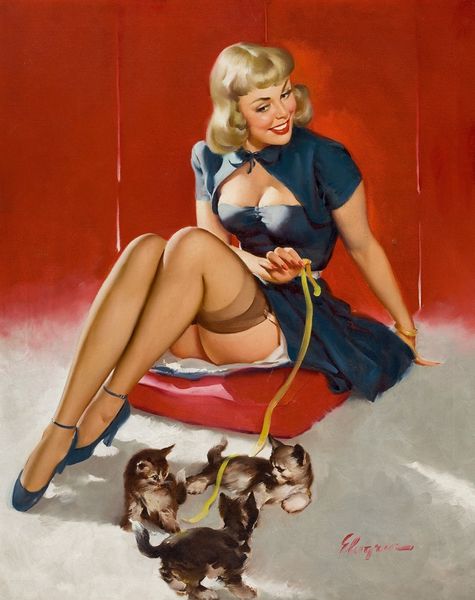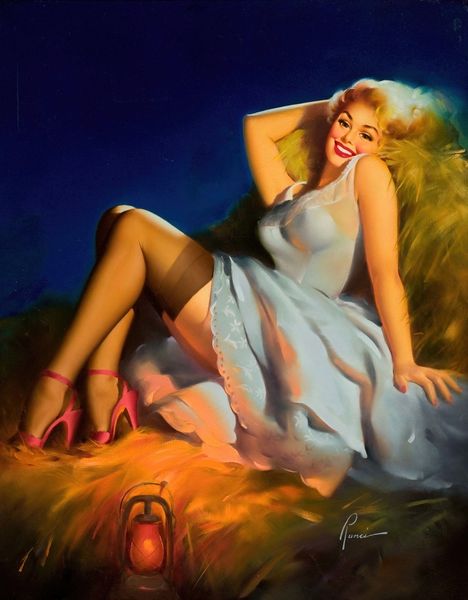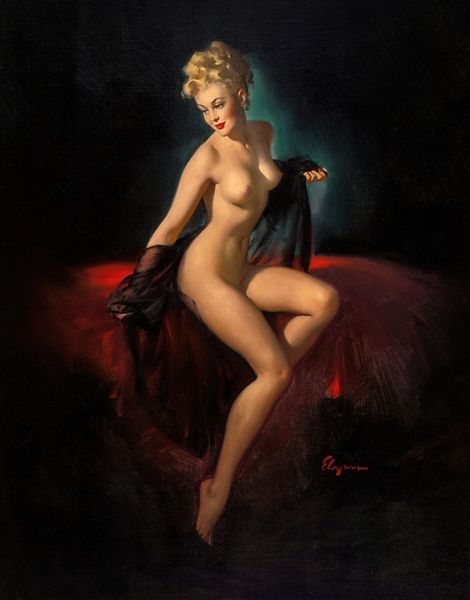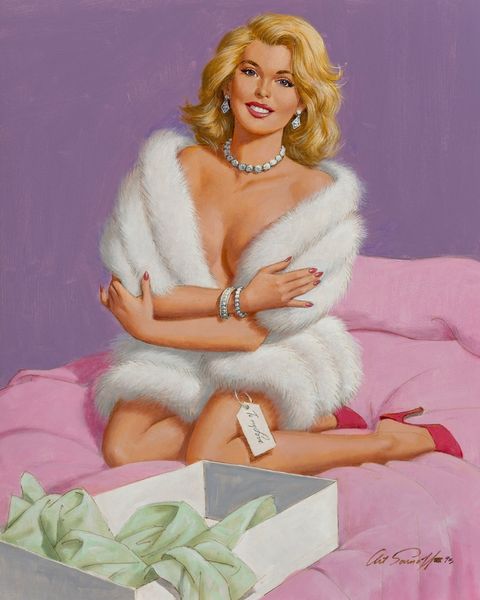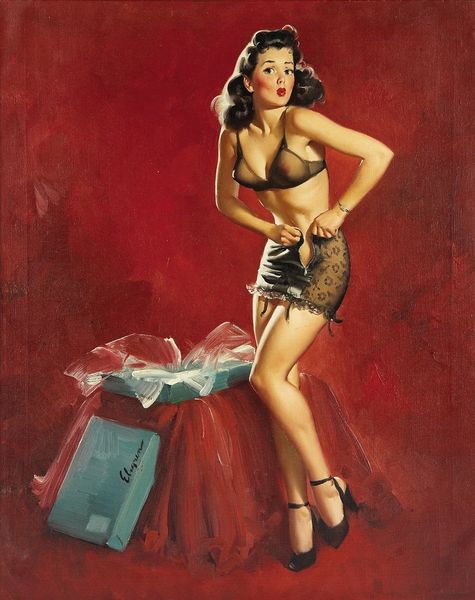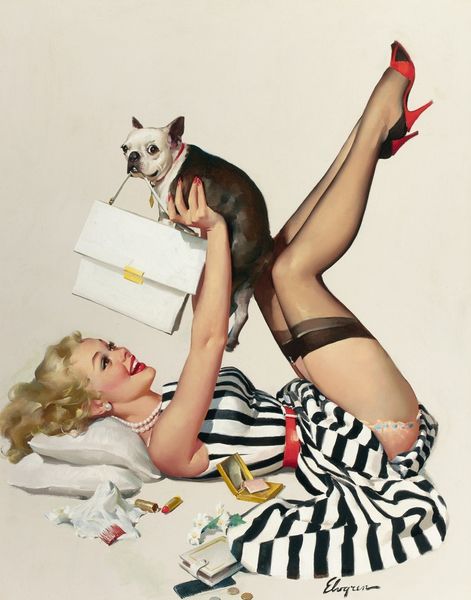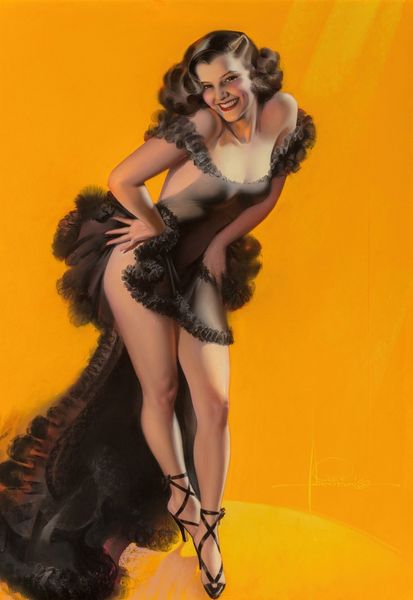
Copyright: Modern Artists: Artvee
Editor: This is Gil Elvgren's "Bear Facts," painted in 1962 using oil paints. It has quite an… assertive quality. The woman, the black lingerie, and the fur rug featuring a bear’s head... What strikes you about this piece? Curator: The conspicuous display of materials speaks volumes. Consider the oil paint itself: a mass-produced, readily available medium facilitating this fantasy. The "fur" rug is perhaps the most telling. What does it mean to depict simulated luxury? Editor: I guess it points to the commodification of even wild spaces and animals. The 'natural' world rendered as a domestic prop. Curator: Precisely. Note, too, how the woman is constructed. She isn't simply represented; she's manufactured. Her hair, makeup, and clothing, all consumer goods meant to shape identity, hint at social performances and gender roles. The male gaze is material here, an industrial process! Editor: That's fascinating. So, it's not just about the surface image, but about how all these components work together. Curator: Exactly. Think about the labor involved in creating and then selling that image – from the oil paint's creation to the marketing that would use images like this. Editor: So analyzing Elvgren through a materialist lens really helps expose its connections to consumer culture. I didn’t think of it that way before. Curator: That’s the key—seeing beyond the image, recognizing the power of the object, the process, and the inherent economic relations at play.
Comments
No comments
Be the first to comment and join the conversation on the ultimate creative platform.
